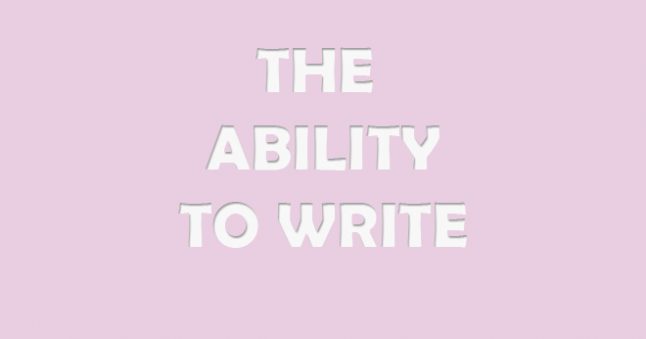“A, B, C- as easy as 1, 2, 3!” Letters are common. Letters are everywhere. If it weren’t for them, our daily communication would prove a lot more difficult. How could we read? How could we make words with these letters? But how do they work? Where do they come from? And how exactly do we make words with these letters? To answer these questions, let’s have a look into the human brain and how mankind acquired the ability to make words with these letters.
What are you doing right now? Of course you’re reading this article on, well, reading. To change the perspective a bit though, you are looking at a page crammed with letters. Nonetheless, you do make sense of this chaos by recognizing all these groupings of letters as words, and this enables you to comprehend the meaning of the text. Making words with these letters is a natural thing for you to do- but there is also a rich history behind it.
How We Acquired the Ability to Make Words with These Letters
Humanity has used signs and images to visualize spoken language since the dawn of civilization. Today we separate the various letters and alphabets used to make words into alphabetical scripts (a certain letter stands for a certain sound) and pictorial scripts (the sign has a meaning in itself).
The Early Beginnings of Letters
It is, however, hard to say when this really started. Some scientists believe the beginnings of letters first sprang up in China, in the form of the so-called Jiahu script dating back to around 6600 BC. The problem is that there seems to be no cultural context, so it remains unclear if people really used these letters to make words.
Other sources point to Southeastern Europe. In 1908, scientists discovered the Vinca script on the Tartaria tablets in Romania. These tablets are estimated to have existed since 5300 BC.
Around 3200 BC, the ancient Egyptians developed new letters to make words with. Contrary to the aforementioned, this script has been well researched and proved to have a massive impact on the history of letters.
Egyptian Letters and How to Make Words with Them
The word “hieroglyphs” can be translated as “god’s words”. According to myth they were created by Thot, the god of wisdom. There were twenty-two of these signs in total plus, to make complete words with these letters, a twenty-third letter for vowels at the beginning and end of a word.
How did the Egyptians make words with these letters? Based on common knowledge, one would answer, “The letters are the words, since the script was pictorial.” That is not entirely true. The use of “logograms” was just one of three methods employed. Much more commonly used to make words with letters in those early times were “phonograms”, which were written sounds or sound sequences. Also quite interesting were the “determinatives”. So how did one make words with these letters? By guessing!
In a way, these hieroglyphs were a form of “wordplay”, since the meaning of a word had to be determined through clues. All in all, this makes the hieroglyphs the basis of a multitude of different types of letters.
Our Letters and How They Came to Be
From then on, several letters and alphabets developed. The hieroglyphs and their successors “gave birth” to the Semitic Script around about 1850 BC. The Canaan people used this script to make words with these letters, using the first sound of the Semitic expression for a certain object depicted by a hieroglyph. Take the Egyptian hieroglyph “per”, for example, which means “house”. The original sign was used by the Canaan people for the sound [b], because their expression for “house” was “bayt”.
Why are these letters important for our history of letters? Later this Semitic script became Phoenician, which was the basis for the Aramaic and Greek alphabet. Among many others, Phoenician is also the origin of the Latin alphabet we use today. The Romans used it too, and we still make words with these letters.
Today there are many different alphabets used by people all over the world. The alphabetical scripts are the most dominant; although there are still pictorial scripts used in Asia, such as the Japanese Kanji.
The Reading Process
So to answer our question, “How do we make words with these letters?” properly, we have to look at both types.
Where Reading Happens
Pictorial scripts employ greater parts of the right side of the brain, while alphabetical scripts use greater parts of the left side. In this article, however, we will focus on the alphabetical scripts.
Reading is not acquired genetically, it has to be learned. Education therefore plays an important role in enabling us to make words with these letters. The connection between the letter “a” (the grapheme) and the sound [a] (the phoneme) happens arbitrarily, as does the combination of different sounds or letters. We know how to pronounce the word “alphabet” because we were taught how. Entire fields of research, ranging from linguistics to neurology, focus on our ability to make words with these letters.
What Happens When We Make Words
Reading is a complex, but fast process. It takes just fractions of a second. To illustrate, let’s take the word “alphabet” as our example. At first, the brain recognizes the single letters on a visual level. To make words with these letters, the brain then adds the acquired sounds. Afterwards, it then repeats these processes for every single letter from “a” through “t”. Only then is the brain able to recognize the word “alphabet” and remember its meaning. The more practiced we become in reading; the quicker we are able to make words with these letters.
What seems so simple is one of the most important techniques we ever learn. Taking this and the long history of letters into account, there is a lot more to it all than just “A, B, C- as easy as 1, 2, 3!”

